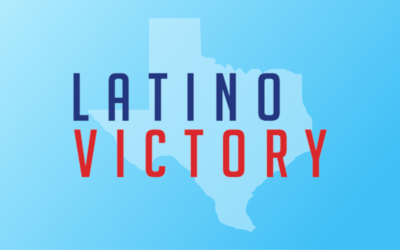MS-13 has been called the most dangerous gang in the world. The gang’s shocking violence and satanic influences have earned it a high level of notoriety and it’s a favorite talking point for Republicans seeking to justify stricter immigration policies, especially Donald Trump. According to them, MS-13 is proof that violent immigrants are flooding into America. The large number of migrants arriving at the border as well as a recent gruesome murder in New York City by suspected MS-13 members are likely to bring these talking points back. Yet many misconceptions about the notorious gang are abound and the history of MS-13 may surprise you.
To understand MS-13, or Mara Salvatrucha (the exact origin of the name is disputed), one must go back to the El Salvadoran Civil War that began in 1979 and lasted throughout the 1980s. It was one of the many proxy conflicts of the Cold War, with the US-backed government pitted against left-wing guerrillas backed by Cuba, and other Communist countries. According to the UN, 85 percent of the violence against civilians was committed by government forces and death squads, whom the United States supported with weapons and training. The brutal conflict created hundreds of thousands of refugees, many of whom ended up in the United States.
MS-13 originated in the United States, not Central America. Los Angeles was a major hub for those fleeing the war, and that’s where the gang that became MS-13 got its start. The teenage children of Salvadoran refugees banded together to smoke weed and listen to rock music, creating something that was a far cry from the violent gang that it later became.
It’s unclear exactly when or why MS-13 transformed from stoner kids (the first LAPD reference to MS-13 calls them the “Mara Salvatrucha Stoners”) to a network of hardened criminals. One theory is that while the original members had little first-hand experience of El Salvador’s conflict, later generations of Salvadoran immigrants had been more exposed to the horrors of war and turned MS-13 violent. Another explanation is that MS-13 became more violent as a result of repeated confrontations with other street gangs. Yet another is that many of the gang’s delinquent youth ended up in prison as a result of “tough on crime” policies, where they were transformed into hardened criminals.
When El Salvador’s Civil War ended in 1992, the US government began deporting many Salvadorans. These deportations included members of MS-13 as well as Barrio 18 (also known as the 18th Street gang), one of Los Angeles’ first multi-ethnic and multicracial gang that included large numbers of Central Americans. Barrio 18 is similarly dangerous but receives less attention from Trump and the GOP, probably because MS-13 has a more ominous-sounding name.
A nation devastated by war proved to be fertile ground for both MS-13 and Barrio 18, and the two gangs quickly spread throughout El Salvador and even into the neighboring countries of Honduras and Guatemala. In short, the United States exported MS-13 to Central America.
As the power and influence of MS-13 and Barrio 18 grew, so too did their rivalry. Like competing great power countries, the two gangs frequently clashed as they vied for supremacy. In the early 2000s, the government of El Salvador implemented a series of policies called “La Mano Dura” or “Iron Fist,” intending to crack down on the rising violence. Thousands of gang members were rounded up and thrown in prison. While there was a decline in homicides in the first year, La Mano Dura ended up backfiring spectacularly. Perhaps unsurprisingly, MS-13 was able to recruit more members in the overcrowded prisons. Furthermore, prison fights between MS-13 and Barrio 18 forced the government to house them in separate prisons. Once this happened, MS-13’s leadership found that it was actually easier to run things from the inside than it was on the outside, as they were safe from Barrio 18 while in prison and had ready access to cell phones.
The violence, which at times could feel more like a civil wa than a gang war, didn’t subside until a truce was reached between MS-13, Barrio-18 and the government in 2012. But the truce fell apart the following year, causing another wave of violence. El Salvador has the highest murder rate in the world, with Honduras coming in second, thanks in large part to the three-way struggle between MS-13, Barrio 18 and the government. While COVID-19 has brought the Northern Triangle some respite from the gang conflict, there is good reason to expect violence to return as the pandemic subsides.
Meanwhile, MS-13 has continued to exist in the United States but it took on a very different trajectory from its Central American counterpart. MS-13 is far less organized in the United States than in El Salvador. The ability of MS-13’s leadership to restrain its member’s during the truce demonstrates a certain degree of structure and hierarchy, but in the United States MS-13 is more like a federation of various cliques working under the same brand. Efforts by MS-13 to create a single national gang have failed.
While MS-13 is a powerful threat in Central America, it’s comparatively weaker in the United States. It’s estimated that MS-13 has only 10,000 members in the United States, less than 1 percent of the 1.4 million gang members across the country. That number also hasn’t budged over the past decade, indicating that MS-13 is not being stamped out in America but it’s not growing either. While there have been some horrifying murders committed by MS-13 in the United States, they tend to attract unwanted attention from law enforcement. Guatemalans, Hondurans and Salvadorans are the ones who have to live with the consequences of the US’ blunder regarding MS-13, much more so than Americans.
MS-13, along with Barrio 18, may be the United States’ worst policy failure in regard to Central America. The United States’ hand in the Salvadoran Civil War and the mass deportations that followed have created a nightmarish problem in the Northern Triangle (in fairness, Central American governments definitely made the problem worse). Figuring out how to deal with MS-13 will be a complex task as it’s a complex organization. As a report from American University put it, “the gang is a study in contrasts; a violent criminal group, to be sure, but also part social and part political. It is a group that can fill basic human needs just as easily as it can end a human life. It can move drugs over international borders, but it has a difficult time paying its members a living wage.” More deportations or incarcerations won’t solve the problem, but it’s not clear what will.
Photo: MARVIN RECINOS / AFP via Getty Images
William serves as the Washington Correspondent for the Texas Signal, where he primarily writes about Congress and other federal issues that affect Texas. A graduate of Colorado College, William has worked on Democratic campaigns in Texas, Colorado, and North Carolina. He is an internet meme expert.




